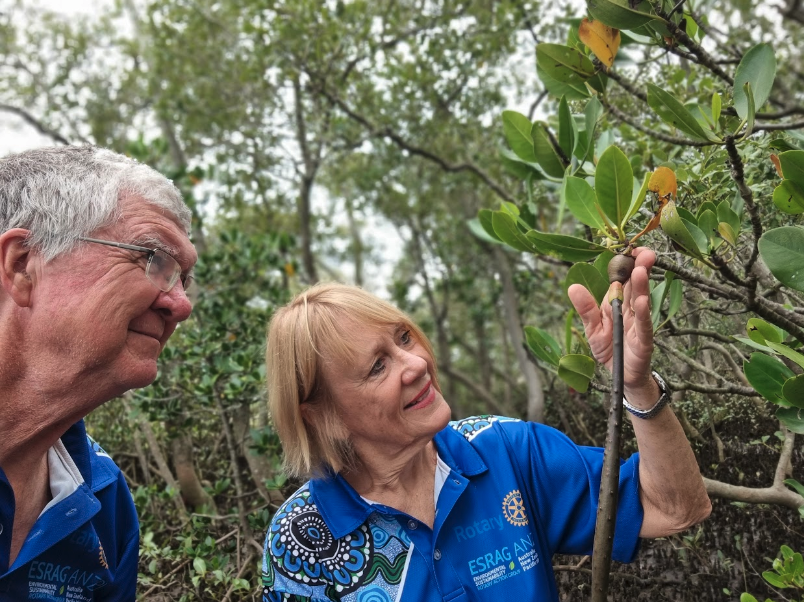Mangrove Information / Restoration
Developing awareness of different types of mangroves and their characteristics.

Mangrove Information and Restoration
Location/Club: Rotary Club of Redcliffe Sunrise, District 9620, Australia, QLD
More information : Website.
Description
The goal is to develop awareness of different types of mangroves and their characteristics. Redcliffe Sunrise Rotary is on the edge of Moreton Bay Marine Park. This project emphasizes saving mangroves and the environment. The club hosted tours to teach behaviors to protect mangroves including leashing dogs and not littering. They help the public learn the 7 important characteristics that mangroves provide for the environment and as being nurseries of the ocean.
1. Biodiversity.
Home to an incredible array of species, mangroves are biodiversity hotspots. They provide nesting and breeding habitat for fish and shellfish, migratory birds, and sea turtles. An estimated 80 % of the global fish catch relies on mangrove forests either directly or indirectly. In Moreton Bay Marine Park (MBMP), bivalves, (Oysters) crabs, prawns, turtles, birds, as well as numerous species of fish. Several of the species are endangered.
2. Livelihoods.
We love our seafood. The communities we work in are fishers and farmers who depend on their natural environment to provide for their families and theirs. Healthy mangrove ecosystems mean healthy fisheries from which to fish, and healthy land on which to farm. Caring for natural resources like fish, prawns, etc will ensure that future generations will be able to count on these same resources.
3. Water.
Mangroves are essential to maintain water quality. With their dense network of roots and surrounding vegetation, they filter and trap sediments, heavy metals, and other pollutants. This ability to retain sediments flowing from upstream prevents contamination of downstream waterways and protects sensitive habitats like coral reefs and seagrass beds below.
4. Coastal defense.
Mangroves are the first line of defense for coastal living. They stabilize shorelines by slowing erosion and provide natural barriers to coastal living from increased storm surge, flooding, and cyclones. Many live within 100 kilometers of the coast and at 100 meters of sea level. Robust mangrove forests are natural protection for communities vulnerable both to sea level rise and the more intense and frequent weather events caused by climate change.
5. Carbon storage.
Mangroves “sequester carbon at a rate 2 to 4 times greater than mature tropical forests and store three to five times more carbon per equivalent area than terrestrial forests” like the Amazon rainforest. This means that conserving and restoring mangroves is essential to fighting climate change, the warming of the global climate fueled by increased carbon emissions, which is already having disastrous effects on communities worldwide. At the same time, mangroves are vulnerable to climate change as sea level rise it pushes ecosystems inland (Mangrove Squeeze).
6. Materials.
In addition to consuming fish and shellfish from the mangroves, communities have historically used mangrove wood and other extracts for both building and medicinal purposes. Their potential as a source for novel biological materials, such as antibacterial compounds and pest-resistance genes, remains largely undiscovered. Mangroves represent less than 0.4% of the world’s forests, but they’re disappearing three to five times faster than forests. Universities are collaborating with pharmaceutical companies to innovate with new techniques to help mangroves thrive.
7. Sustainable development.
Intact and healthy mangroves about MBMP have an untapped potential for sustainable revenue-generating initiatives including ecotourism, sport fishing, and other recreational activities. Locally led community development can offer economic growth.
